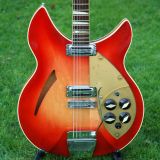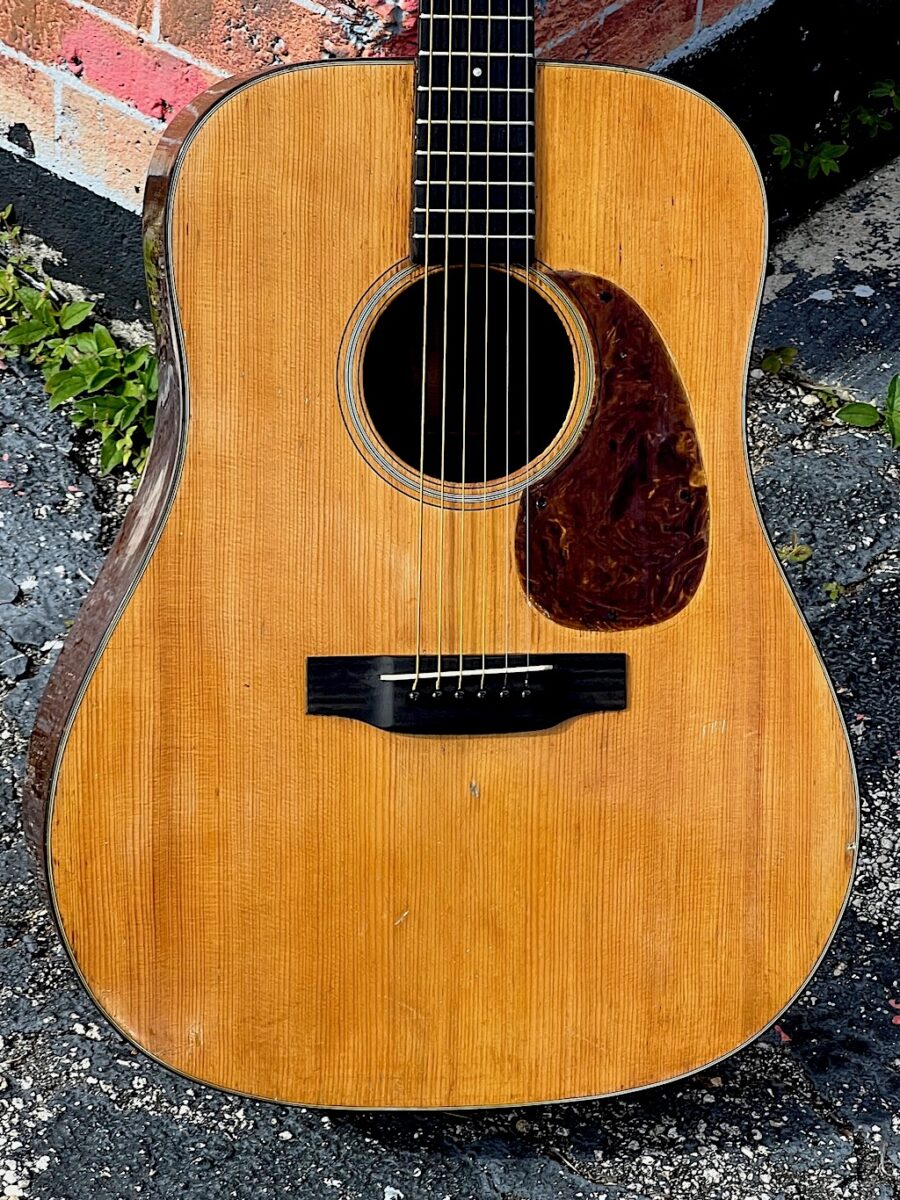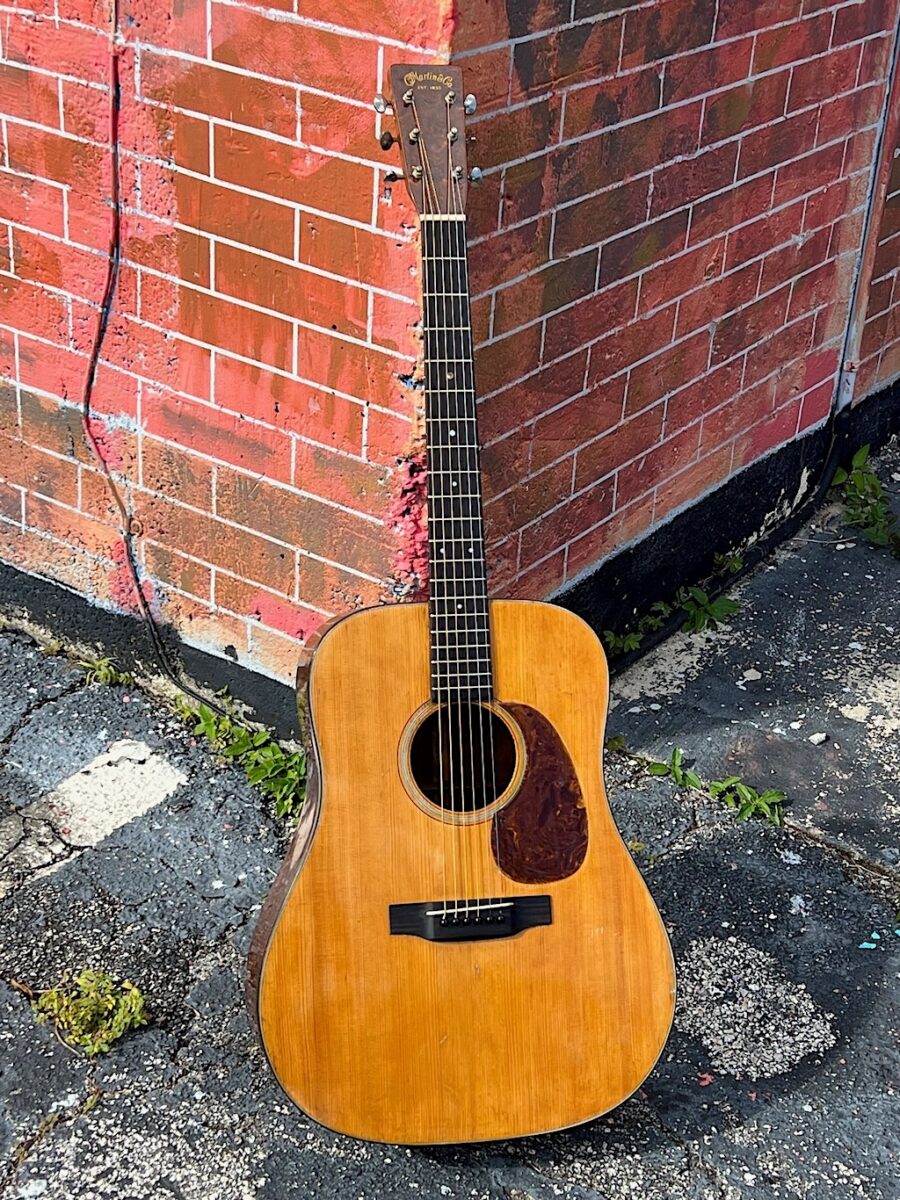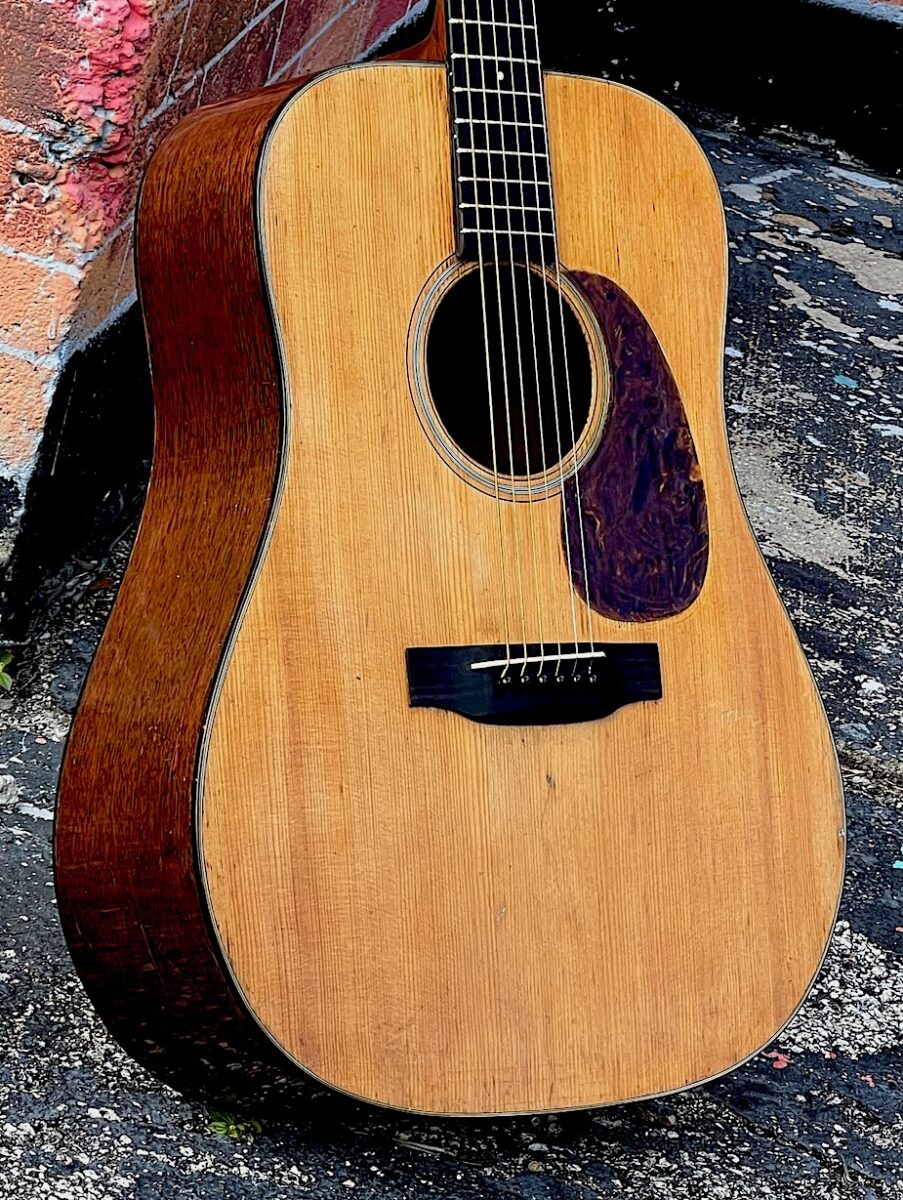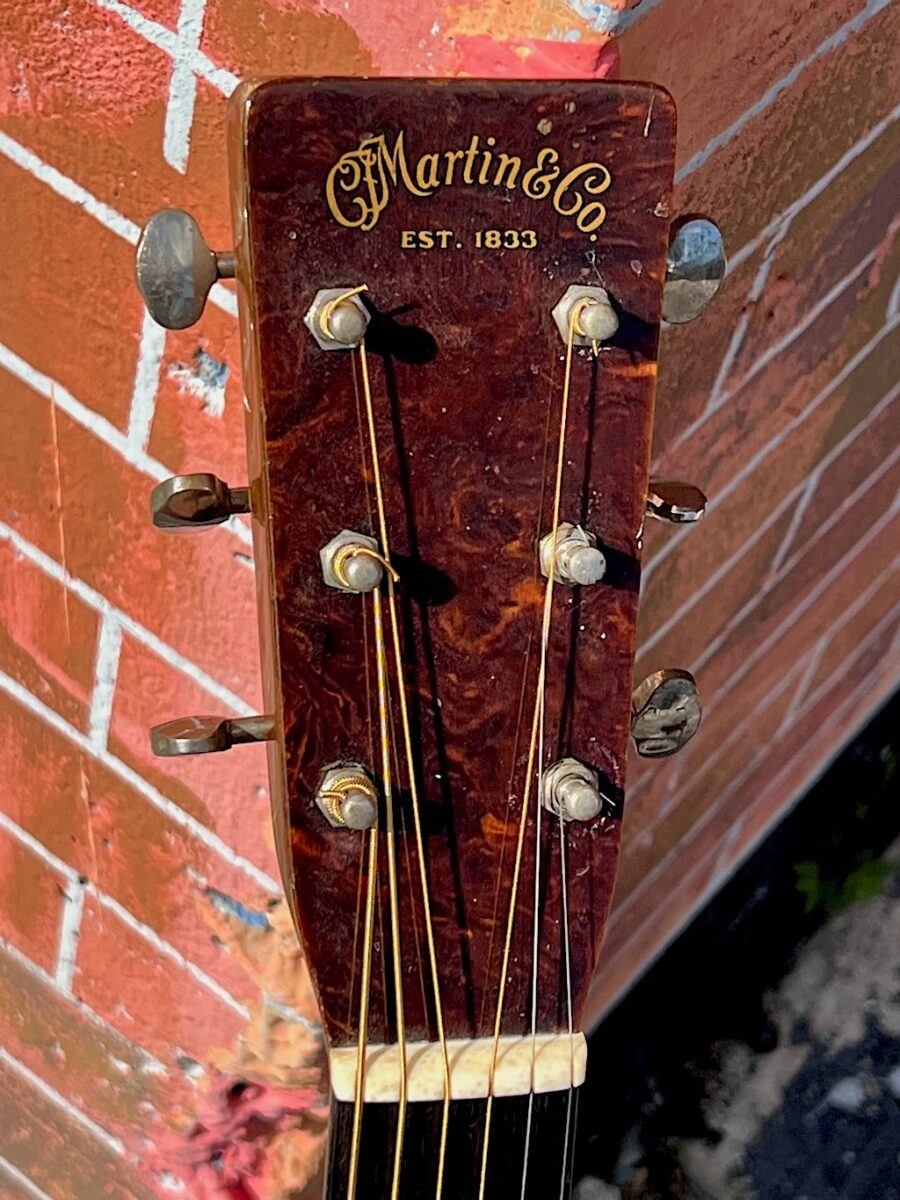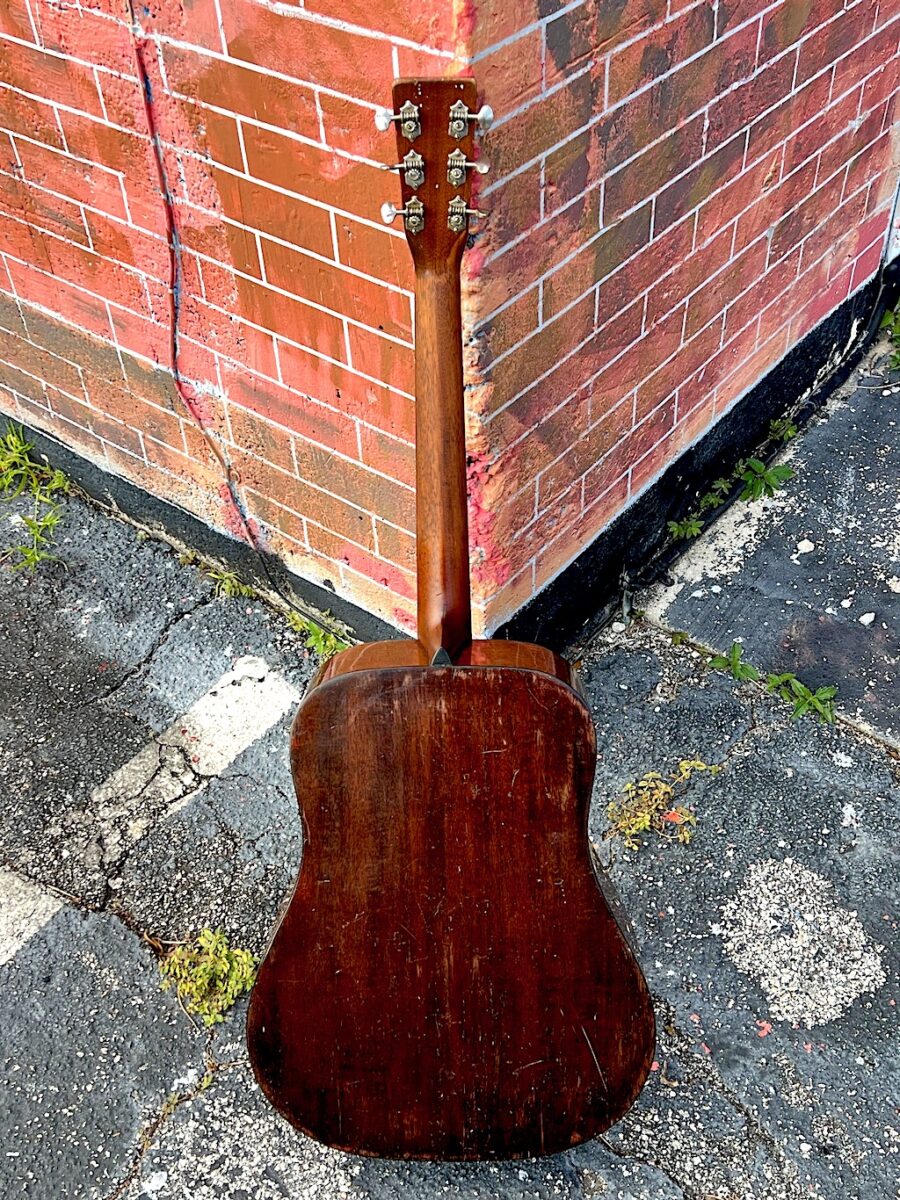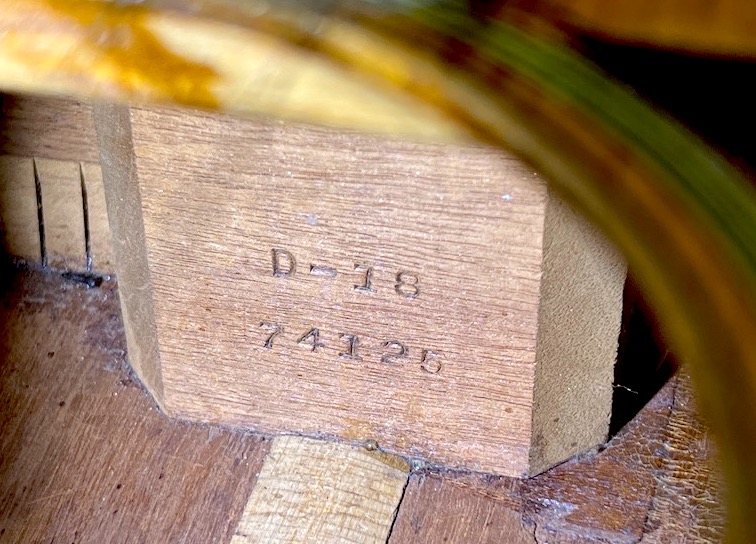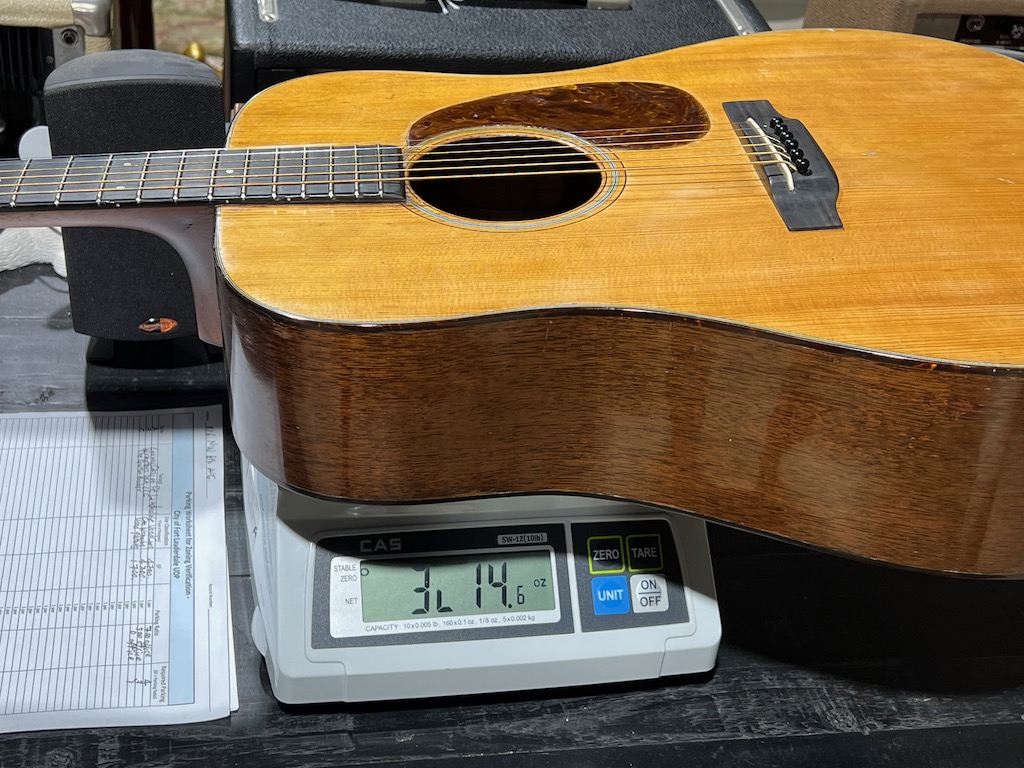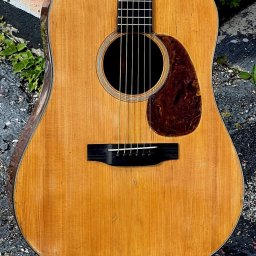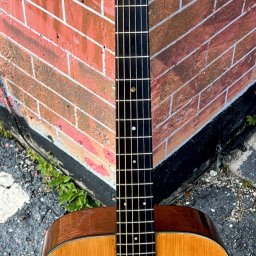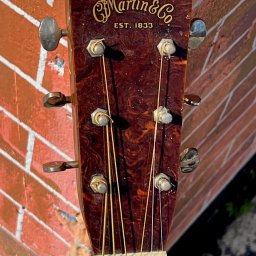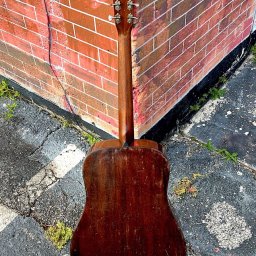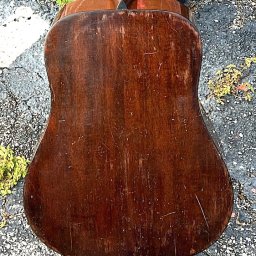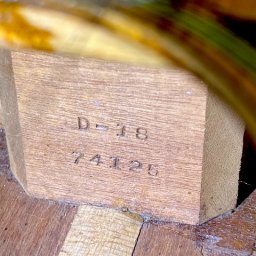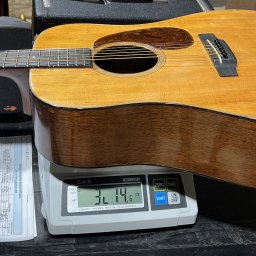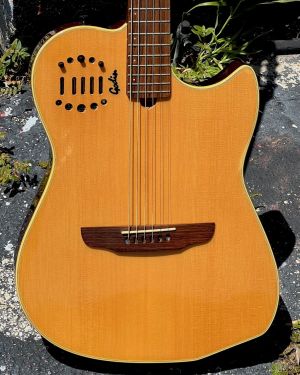- Home
- Flat Top Guitars
- 1940 Martin D-18 Special Order
1940 Martin D-18 Special Order
| Year | 1940 |
|---|---|
| Make | Martin |
| Model | D-18 "Special Order" |
| Condition | Very Good |
Description
Certain guitars have long been the standard by which all others are judged; the Pre-war Martin D-18 is always one of them. This mid-1940 example represents a beautifully played-in original 14-fret mahogany Dreadnought that has seen endless imitations but very few peers since its birth. While the guitar shows quite a bit of playwear it remains in excellent playing condition and offers the expected fantastic sound one expects. The power and depth of a Dreadnought combines with the sweetness, sparkle, and singing character of the best pre-WWII mahogany Martins in a magical mix, making this an exceptionally versatile flat-top guitar suited to practically any musical situation. This D-18 shows the classic pre-war features of the model, introduced in this form in late 1934 and widely imitated ever since.
The top is made of tight-grained Adirondack spruce, its Honduras mahogany back & sides have aged nicely, bound on the edge with celluloid. The ebony belly bridge is a perfect reproduction. The pickguard is made of tortoise celluloid in a small “teardrop” shape w/4 tiny screw holes touched up, it’s a design that often proved too small to fully protect the top from the ravages of enthusiastic picking. The neck is mahogany w/an unbound ebony fingerboard discreetly inlaid with small mixed-size pearls. The peghead is faced w/a Tortoise-shell Lamination w/a gold “C.F. Martin & C.” decal at the top. The neck profile is round backed but with the slightest hint of a “V” profile in the way the sides bear away from the center as it moves towards the nut, which is slightly narrower than mid-thirties examples. The tuners are open back individual Grover units with metal buttons. Its neck finish is completely worn & smooth & its back finish only appears to have been over-sprayed w/a few small cracks repaired at the very bottom of the back side. Its just had its neck reset & refretted by Bob Peterson which makes this 1 of the finest sounding examples in the World & we are not kidding. At a scant 3 lbs. 14 oz., it sings like no other we have had. Its very good overall & 1 of the rarest D-18’s extent. It comes in a nice period hard case.
What make this so special is its just 1 of 3 known ever from 1940 w/a factory tortoise headstock overlay as used occasionally on their 0-15 & 0-17’s from 1940 to give them a richer appearance. It also sports its original matching tortoise bindings on both sides of its body (all D-18’s had simple black binding all over). This was just verified by Martin Guru, “Greig Hutton”, who also told us this had a Shop Order # 139 , the Neck Block was stamped on January 9th, 1940 & its Final Inspection was on May 21st, 1940. In 1940 the price of a new D-18 was $65 (without case), a sizable expense for many Americans at the time. They sold decently by contemporary standards, with 377 shipped that year. By the 1950s Martin was building two or three times that amount every year; pre-war examples were far scarcer even then. Today at 83 years young, finding a 1940 example even as well preserved as this one is a fairly rare occurrence. In the minds of most acoustic guitar players, collectors, and historians, very few instruments approach the pre-war Martin Dreadnought in terms of sound and historical importance. Compared to all that’s come down the pike since, this is still one of the finest performing or recording guitars imaginable. While the rosewood D-28 is optimized for power and bass response, the D-18 is often a more versatile instrument combining the mellow depth of the Dreadnought with a crisp, slightly dry mahogany ring. This is a truly great early pre-war example, well played over the decades but also well-cared for and ready for many more years of enjoyment. Comes complete w/a full COA from Mr. Greig Hutton, the Martin Historian from the Hutton’s Registry & keeper of all records w/all factory dates from ts 1st date stamped from January 9th, 1940 to its final inspection & completion date of May 21st, 1940.
You may also Like



